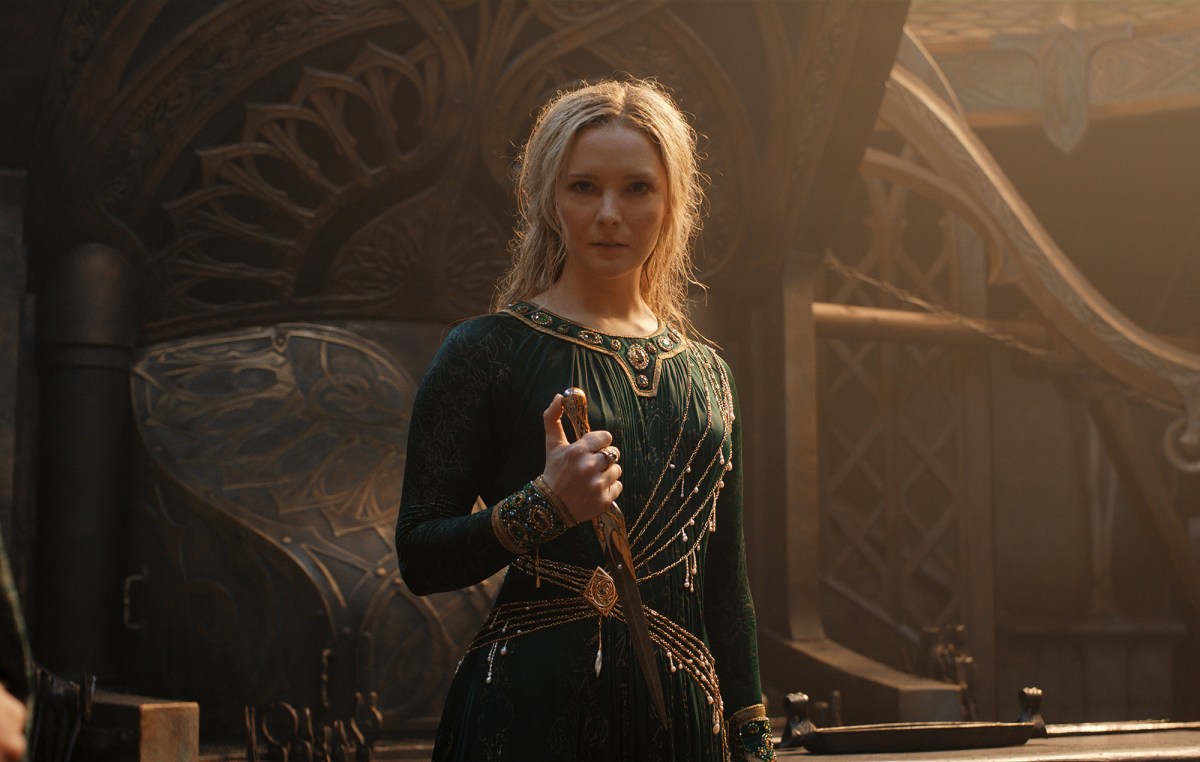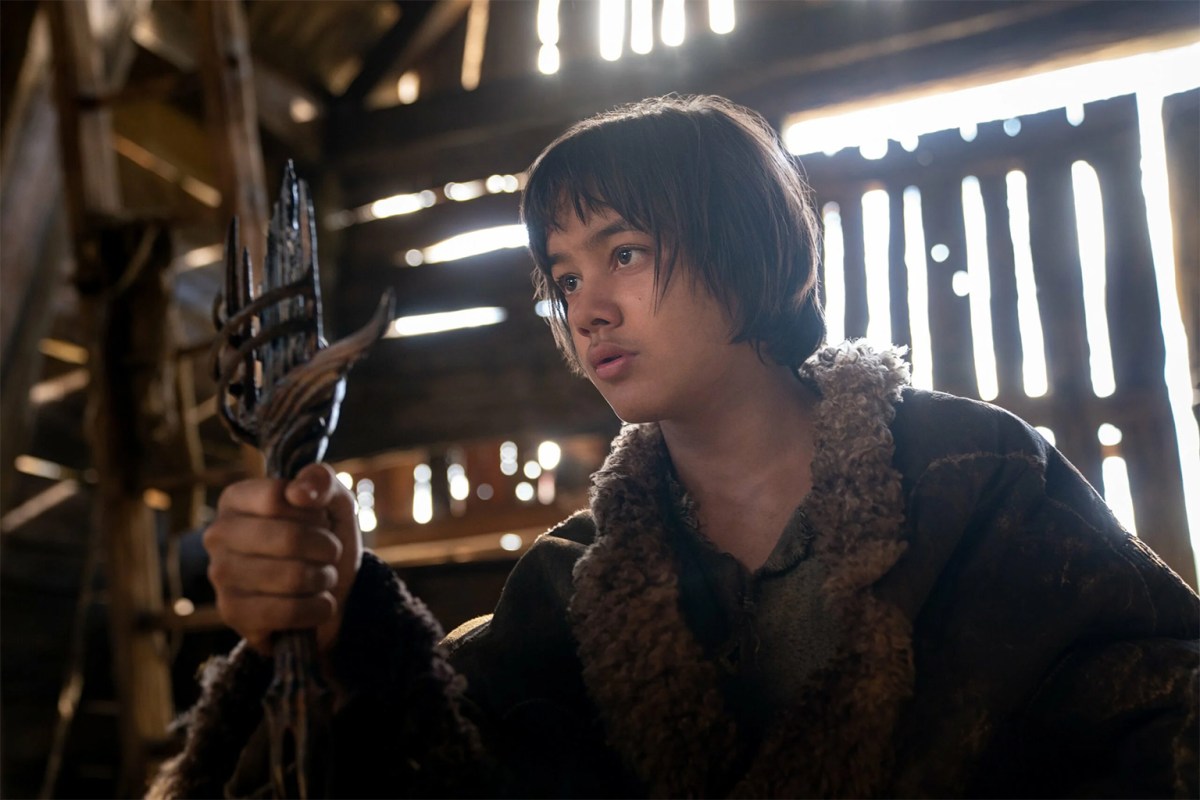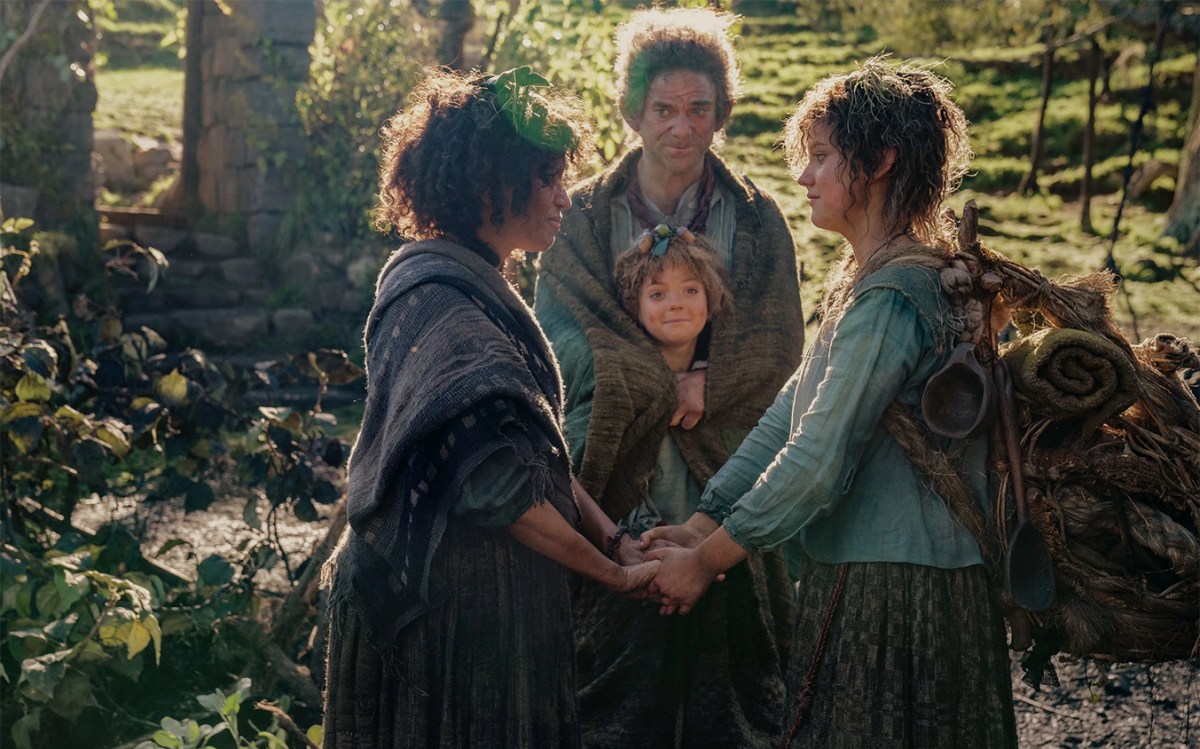This discussion and review contains spoilers for The Lord of the Rings: The Rings of Power episode 8, “Alloyed,” the season finale, on Amazon Prime Video.
“Alloyed” brings down the curtain on the premiere season of The Rings of Power, but it also demonstrates the big structural issues with this eight-episode run.
The Rings of Power has been paced incredibly awkwardly. This has been a consistent problem with the series. It has often been difficult to figure out whether the primary plot threads are unfolding in parallel or if some are moving faster than others. Major characters have found themselves stuck in narrative cul-de-sacs as they wait for the rest of the plot to advance around them to a point where they can conceivably join the rising action.
This was most obvious with Galadriel (Morfydd Clark) during the first half of the season, in the stretch between her introduction in “A Shadow of the Past” and her eventual return to Middle-earth in “Udûn.” It’s worth speedrunning through her story: Galadriel gets menaced by a sea monster in “Adrift” and then taken to Númenor in “Adar,” where she spends three whole episodes getting on and off boats while trying to raise an army to bring with her to fight the orcs in the Southlands.
There are obvious beats that The Rings of Power needs to hit with that plot. Galadriel has to meet Halbrand (Charlie Vickers), and the show needs to establish some of the internal politics of Númenor around characters like Míriel (Cynthia Addai-Robinson), Elendil (Lloyd Owen), and even Pharazôn (Trystan Gravelle). However, that is all “shoe leather.” It feels like work that the show is putting in out of a sense of obligation and extending because Galadriel can’t get to Middle-earth before “Udûn.”

“Alloyed” has the inverse problem. Whereas early stretches of The Rings of Power suffered from trapping characters in narrative segments that stretched already thin plots to a breaking point, “Alloyed” is stuffed full of plot. This episode has a lot of ground to cover, to get its various competing plot threads to satisfying conclusions at the end of the first season. To give the show some credit, most of these endpoints are basically functional. However, the show scrambles to get there.
If the opening run of the season moved too slow, “Alloyed” moves too fast. The Stranger (Daniel Weyman) is confronted by the Ascentic (Kali Kopae), the Nomad (Edith Poor), and the Dweller (Bridie Sisson), who boldly identify him as Sauron. They try to reawaken his memories, convincing him that he is truly the Dark Lord. This leads to a confrontation with the Harfoots and the discovery that the Stranger is not in fact Sauron, but is in fact one of the Istar.
That would be enough plot for an entire episode, but it’s also integrated with another major plot that follows the forging of three of the eponymous Rings of Power at Ost-in-Edhil, overseen by Celebrimbor (Charles Edwards). Again, there is a lot of plot going on here, with Halbrand manipulating Celebrimbor, King Gil-galad (Benjamin Walker) getting cold feet, and Galadriel discovering that Halbrand is actually Sauron. Again, it is a lot of plot.
Of course, it makes sense to have these two plots pay off in parallel, particularly in the season finale. These are, after all, the two big independent plot threads in the show and the two big remaining “mystery boxes” that needed to be resolved going into the hiatus. However, the problem is that “Alloyed” has to do a lot of legwork to get these threads properly in motion, and then also has to resolve them, all within a single episode of the show.

It is a messy structure. To put it frankly, a lot of the setup for these stories should have been done earlier in the season. The season’s penultimate episode, “The Eye,” should have been laying down narrative tracks building to these big reveals. After all, these plots were both seeded early in the season. The Stranger came crashing down to Middle-earth at the end of “A Shadow of the Past.” Celebrimbor was introduced in “Adrift.” However, they never really advanced.
There is absolutely no excuse for leaving them idling while Galadriel spent half the season in Númenor. Indeed, the decision to stall these plots for seven episodes before kicking them into high gear feels governed by cynical external factors unrelated to the actual story being told. The Rings of Power held back on kicking those two threads into high gear until the season finale because actually advancing them would force the show to open its two big remaining mystery boxes.
The Rings of Power is a curiously old-fashioned show. This ties into a broader trend in contemporary streaming, with the introduction of ad-supported tiers on Netflix and plans for the same on Disney+. Streaming services have begun pushing away from a binge model for their bigger shows and towards weekly scheduled drops. The services stagger their big shows across the week. The Rings of Power even releases in prime time in PDT, instead of midnight as traditional for streaming shows.
“I cannot separate what is from what was, what was from what will be,” gasps King Tar-Palantir (Ken Blackburn) in “Alloyed.” The future of streaming looks a lot like television’s past, and that is reflected in the plotting and structuring of The Rings of Power. The show has been heavily reliant on the sorts of mystery boxes that were popularized on television with the success of Lost, but which have arguably fallen out of fashion in the years since, in part because of how they can hinder storytelling.

“Alloyed” is an example of this. The Rings of Power seems to have kept these two plots in neutral because once they start, the endings become obvious. Once Halbrand arrives in Ost-in-Edhil and begins manipulating Celebrimbor to forge the Rings, anybody with even a casual familiarity to The Lord of the Rings knows that he has to be Sauron. Similarly, once the episode opens with the assumption that the Stranger is Sauron, the audience begins waiting for the other shoe to drop.
Had The Rings of Power done the sensible thing, giving these plots room to breathe by starting them in “The Eye,” the answers would have been too explicit. Indeed, the audience watching “Alloyed” spends roughly 70 minutes waiting for the dominoes to fall in the way that they must. Firing the starting pistol on these threads in “The Eye” would mean that the internet would have spent a full week knowing with even greater certainty the identities of Halbrand and the Stranger.
Of course, one of the big tensions in “Alloyed” is that its reveals were fairly predictable from the premiere of “A Shadow of the Past” and “Adrift.” Many viewers identified the Stranger as a wizard (probably Gandalf) and Halbrand as Sauron from the very beginning. However, these answers are so obvious that they raise questions about the point of preserving the mystery box for so long. There’s nothing wrong with mysteries that the audience can solve, but they aren’t compelling if prolonged.
This explains the rather clumsy feint at the start of “Alloyed,” with the Ascentic, the Nomad, and the Dweller misidentifying the Stranger as Sauron. It’s a crazy twist, playing against the way in which the show had clearly set up the Stranger as a wizard. It would be a much less predictable and a much less satisfying payoff to his identity. However, pushing that angle so early in “Alloyed” allows The Rings of Power to have its cake and eat it, teasing a big surprise while delivering a safe resolution.

The result of all this convoluted plotting, driven by the need to cram at least two episodes of plot into a single episode to preserve a set of mystery boxes with obvious solutions, is that there is no space for actual character work. Sadoc Burrows (Lenny Henry) dies trying to protect the Stranger, but the audience has no idea who Sadoc Burrows actually is, beyond being played by beloved entertainer Lenny Henry. The conflict between Celebrimbor and Gil-galad is also undercooked.
“Alloyed” makes much of the idea that the Stranger can choose his identity. “Only you can show who you are,” Nori (Markella Kavenagh) assures him. “You choose by what you do.” However, that is patently not the case. The Stranger isn’t a character with actual agency, because the show hasn’t given him any character to avoid potentially “spoiling” his identity. Instead, he is a puzzle box caught between two configurations. He is Schrodinger’s continuity.
The problem is compounded by the fact that “Alloyed” isn’t especially compelling television. It marks the return of director Wayne Che Yip, who is by the far the weakest of the three directors to work on this season. There are a few moments where there is the potential for some visually interesting storytelling, such as Galadriel’s dream sequence, but it all feels curiously flat and inert. “Alloyed” doesn’t feel like an arresting story, but instead a clumsy mythology dump.
There are a few shadows of interesting ideas here. Tying back to the atomic bomb imagery of “The Eye,” Celebrimbor’s description of the ring as “power of the Unseen World” evokes the language of the splitting of the atom. Indeed, the coloring of the red, white, and blue gems feels quite pointed. There is also a potentially interesting metaphor for the idea of adaptation in contrasting Celebrimbor’s novel smelting techniques with Pharazôn’s rigidly traditionalist approach.
However, none of these ideas get any room to develop, because The Rings of Power was so desperate to preserve its surprises that it stumbled off the trail.
